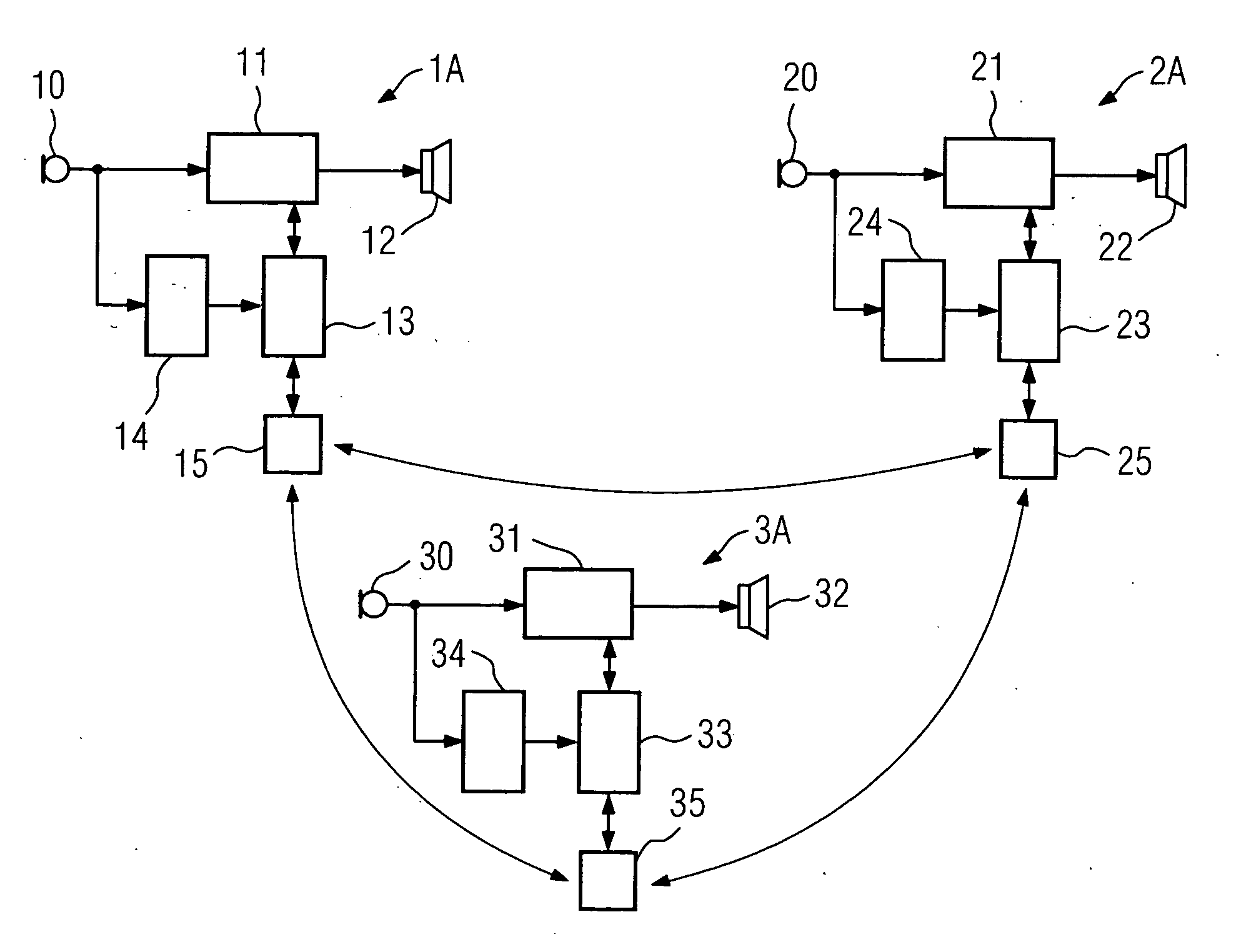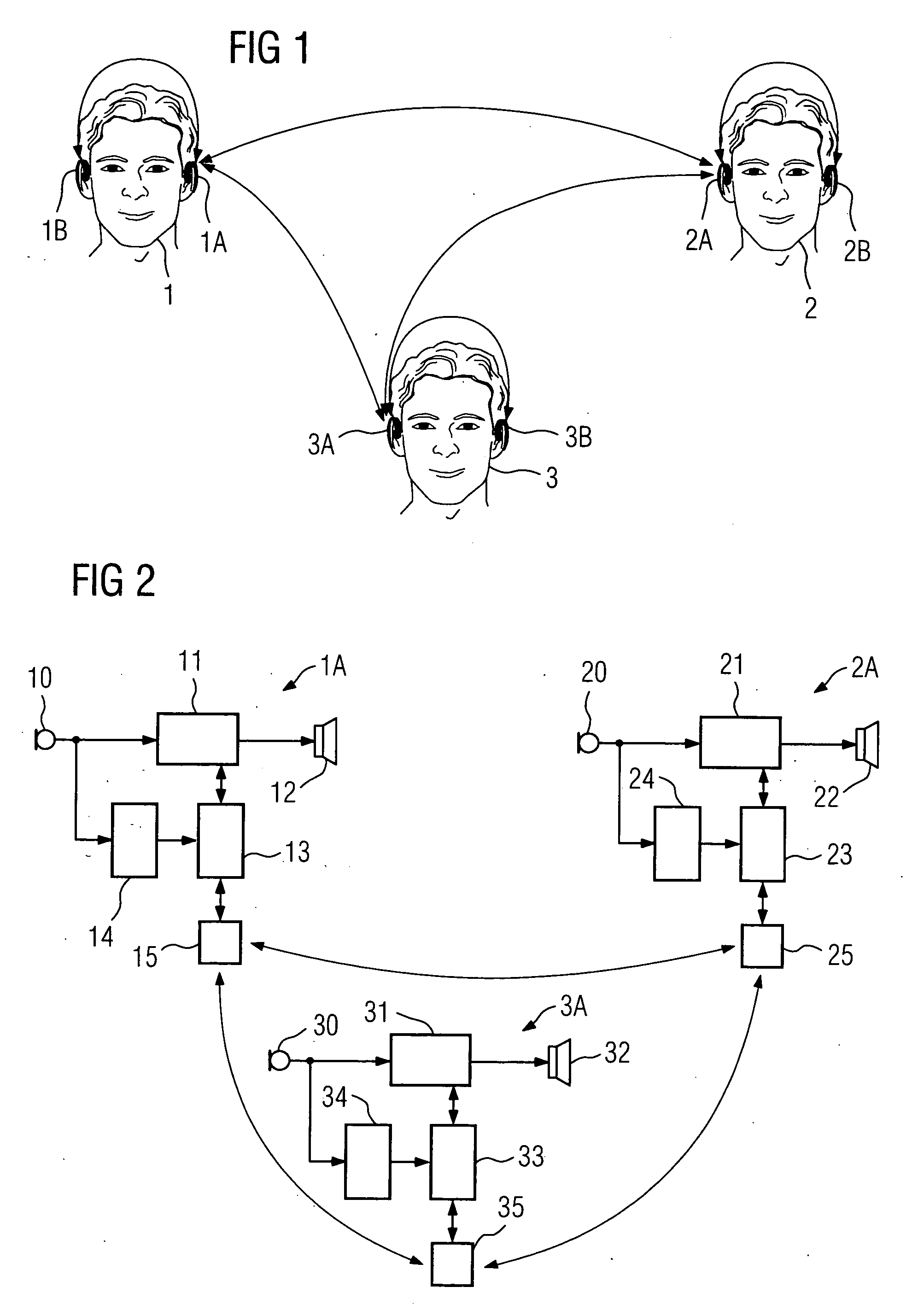Method of operating a hearing aid system having at least two hearing aids
a technology of hearing aids and hearing aids, applied in the direction of deaf-aid sets, electric devices, etc., can solve the problems of very adverse effects on speech comprehension ability of hearing aid wearers, and achieve the effects of improving the signal-signal-to-noise ratio, reducing the number of hearing aid wearers, and reliably classifying the current hearing situation
- Summary
- Abstract
- Description
- Claims
- Application Information
AI Technical Summary
Benefits of technology
Problems solved by technology
Method used
Image
Examples
Embodiment Construction
[0023]FIG. 1 shows three hearing aid wearers 1, 2 and 3, each supplied by two hearing aids 1A, 1B; 2A, 2B; 3A, 3B respectively. They are not at any great distance from each other, e.g. they are together in a room. The hearing aids of each hearing aid wearer possess a transmitter and receiver unit in each case for wireless signal transmission between the hearing aids of the relevant hearing aid wearer. This guarantee s that signal processing is matched in each case for the hearing aids of the relevant hearing aid wearer. For example the hearing aids of a hearing aid wearer are operated in the same hearing program in each case. In accordance with the invention data transmission between hearing aids is expanded to the extent that this is undertaken not only between the hearing aids of a hearing aid wearer but is expanded to a number of hearing aid wearers (users). In this case, in the exemplary embodiment, provision is included for signal transmission between hearing aids 1A and 2A as ...
PUM
 Login to View More
Login to View More Abstract
Description
Claims
Application Information
 Login to View More
Login to View More - R&D
- Intellectual Property
- Life Sciences
- Materials
- Tech Scout
- Unparalleled Data Quality
- Higher Quality Content
- 60% Fewer Hallucinations
Browse by: Latest US Patents, China's latest patents, Technical Efficacy Thesaurus, Application Domain, Technology Topic, Popular Technical Reports.
© 2025 PatSnap. All rights reserved.Legal|Privacy policy|Modern Slavery Act Transparency Statement|Sitemap|About US| Contact US: help@patsnap.com


